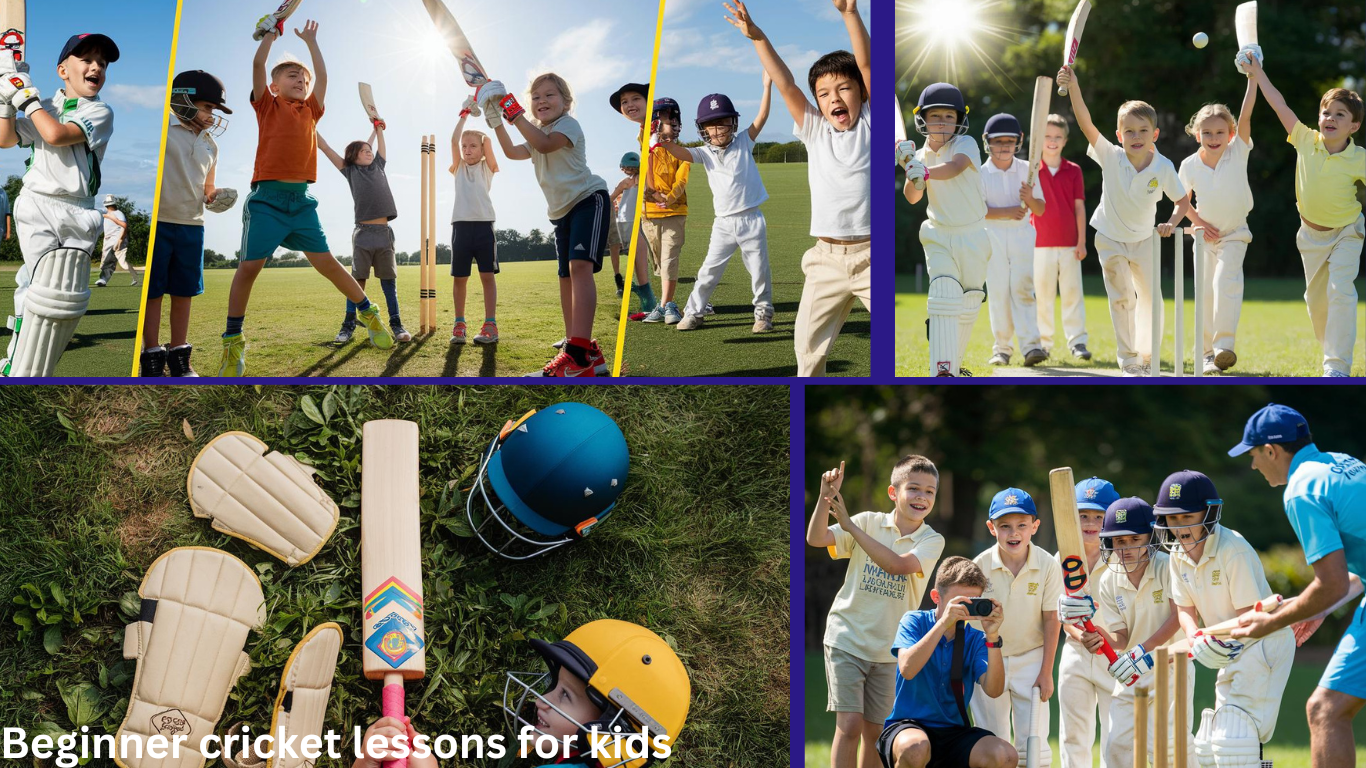Beginner cricket lessons for kids
Beginner cricket lessons for kids

The fundamental techniques of cricket with our beginner-friendly exercises designed specifically for kids, helping them master the basics and improve their game. Our comprehensive lessons are led by experienced coaches who ensure a fun and interactive learning experience for your child.
10 Basic rules of cricket
-
- Cricket is played between two teams, each comprising eleven players (sometimes eight in junior competitions).
- Games consist of at least one innings, with teams taking turns in batting and fielding/bowling.
- The fielding team attempts to dismiss batsmen by:
- Hitting the wickets with the ball while bowling.
- Catching a batsman’s shot on the full.
- Achieving an LBW (Leg Before Wicket) dismissal.
- Running out batsmen before they reach the other end of the pitch.
- Batsmen score runs by:
- Running between the wickets after hitting the ball.
- Hitting boundaries, with four runs awarded for hitting along the ground and six for clearing the boundary on the full.
- The fielding team must dismiss ten batsmen to conclude the innings.
- The objective is to score more runs than the opposing team before the fielding team takes ten wickets.
Five basics skills of cricket
Cricket is a super fun sport with lots of cool stuff to learn! It’s not just about playing; it’s about getting strong and learning how to work with your friends. But, before you can be awesome at cricket, you gotta learn the basics. This article is gonna show you the most important cricket skills and give you fun things to do to get better
Hand-Eye Coordination
- Balloon Tennis
- Catch the egg
Throwing and Catching
- Throw and Catch
- Bucket Brigade
Batting Technique
- Tee Ball
- Throw downs
Bowling Action
- Bowling at stumps
- Bowling Accuracy
Concentration and Focus
- Memory game
- Listening game
Batting technique in cricket
Why Basic Cricket Skills Matter for Kids
- Builds Confidence: Mastering basic cricket skills helps kids feel more confident on the field, which is crucial for their overall development and enjoyment of the game.
- Enhances Participation: When kids have a solid foundation in cricket, they can participate more effectively, which leads to a more enjoyable experience and increased motivation to continue playing.
- Fosters Teamwork: Cricket is a team sport that requires coordination and communication. Basic skills help kids work together seamlessly, promoting teamwork and camaraderie.
- Develops Physical Fitness: Cricket requires a range of physical skills, including running, jumping, and throwing. Mastering these skills helps kids develop overall physical fitness and coordination.
- Improves Mental Toughness: Cricket is a mentally demanding sport that requires focus, concentration, and perseverance. Basic skills help kids develop these mental toughness skills, which are essential for success in the game.
- Encourages Active Lifestyle: Cricket is an excellent way to encourage kids to lead an active lifestyle, which is essential for their overall health and well-being.
- Boosts Self-Esteem: Mastering basic cricket skills can give kids a sense of accomplishment and boost their self-esteem, which is vital for their emotional development.
- Develops Problem-Solving Skills: Cricket requires kids to think strategically and make quick decisions. Basic skills help them develop problem-solving skills, which are essential for success in various aspects of life.
- Enhances Social Skills: Cricket is a social sport that requires kids to interact with teammates and opponents. Basic skills help them develop essential social skills like communication, empathy, and conflict resolution.
- Supports Long-Term Development: Mastering basic cricket skills lays the foundation for long-term development and improvement in the sport. It helps kids build a strong foundation that can be built upon as they grow and mature.
How to Develop Basic Cricket Skills in Kids
- Start with the Basics: Begin with simple drills and exercises that focus on hand-eye coordination, throwing, catching, and basic batting and bowling techniques.
- Practice Regularly: Encourage kids to practice regularly, even if it’s just for a few minutes each day. Consistency is key to developing basic cricket skills.
- Focus on Fundamentals: Emphasize the importance of proper technique and fundamentals, such as stance, grip, and follow-through.
- Use Visual Aids: Visual aids like videos, diagrams, and animations can help kids better understand and visualize cricket techniques, making it easier for them to learn and practice.
- Make it Fun: Incorporate games and activities that make learning cricket fun and engaging. This can include games like “Cricket Bingo” or “Cricket Charades” that help kids learn while having fun.
- Encourage Teamwork: Encourage kids to work together in teams, promoting teamwork and communication.
- Provide Positive Feedback: Offer positive feedback and encouragement to help kids stay motivated and build confidence in their skills.
- Celebrate Small Wins: Celebrate small victories and milestones, such as mastering a new skill or achieving a personal best.
- Be Patient: Developing basic cricket skills takes time and patience. Encourage kids to persevere and stay committed to their training.
- Seek Professional Guidance: Consider seeking guidance from experienced coaches or trainers who can provide personalized feedback and support.

